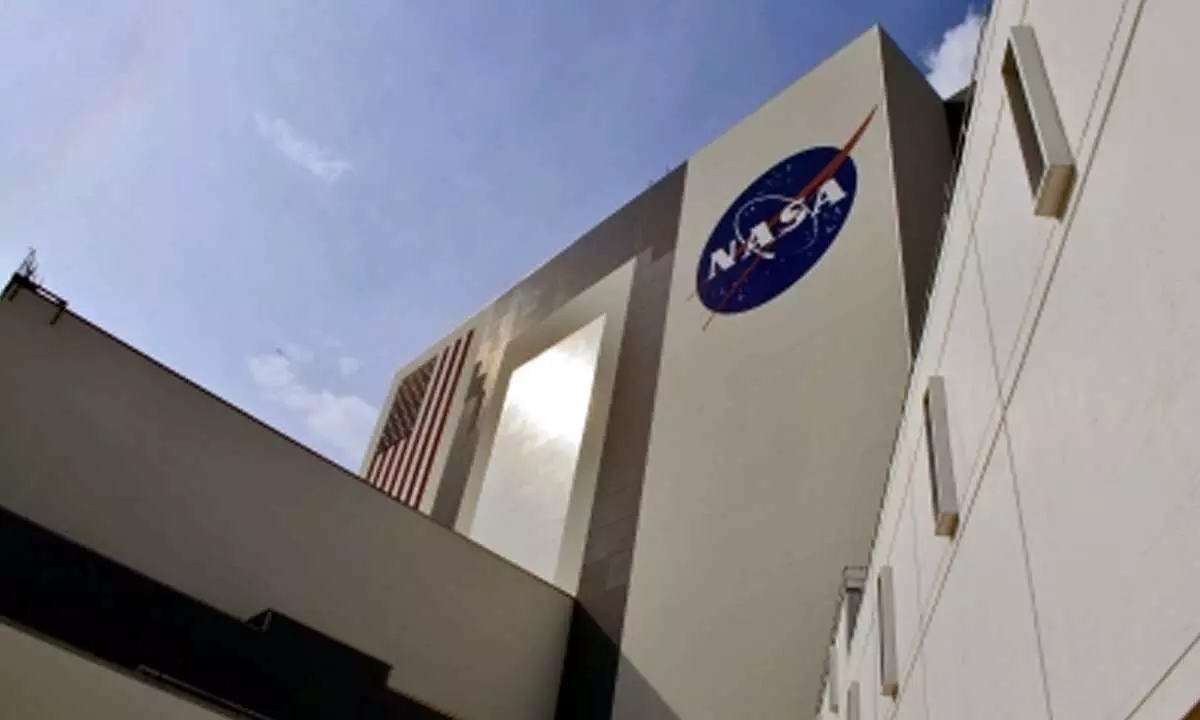Live
- Session on Narrative Building Highlights India’s Changing Global Stance- Sood
- Garena Free Fire MAX Redeem Codes (11 January 2025): Unlock Free Diamonds, Skins, and More
- Mangalore lit fest Policy Reforms and Outdated Laws needed-Sanjeev Sanyal
- Makara -Mahotsav (Sankranti Sambaralu) and National youth day celebrations at Sphoorthy Engineering college
- ASHA Workers Secure Improved Pay and Benefits
- Police Arrest “Digital Arrest” Mastermind
- Puri Backs Energy Security Summit in Mangaluru, Calls for Wider Public Engagement
- Daku Maharaj Trailer Released: Balakrishna's Intense Performance as a Master of Killing Gives Goosebumps
- India’s Energy Sector Poised for Growth Amid Challenges: Hardeep Singh Puri
- APPSC Recruitment Exams 2025: Exam Dates and Schedule for 8 Job Notifications Announced
Just In
No sufficient evidence for ‘extraterrestrial source’ for UAPs: NASA

There is no sufficient evidence to show “extraterrestrial source” regarding unidentified anomalous phenomena (UAPs) formerly Unidentified Flying objects (UFO), said NASA in its independent study on Thursday.
Washington: There is no sufficient evidence to show “extraterrestrial source” regarding unidentified anomalous phenomena (UAPs) formerly Unidentified Flying objects (UFO), said NASA in its independent study on Thursday.
NASA had commissioned an independent study to better understand how the space agency can contribute to ongoing government efforts to further the study observations of events in the sky that cannot be identified as balloons, aircraft, or as known natural phenomena from a scientific perspective.
“At this point, there is no reason to conclude that existing UAP reports have an extraterrestrial source,” the report said.
The report stated that insufficient data and stigma about the topic continue to be significant barriers to uncovering the nature of UAPs. The independent study recommends that NASA can play a prominent role in the government’s effort to understand UAP by furthering the study and data collection of UAP.
“The negative perception surrounding the reporting of UAP poses an obstacle to collecting data on these phenomena. NASA’s very involvement in UAP will play a vital role in reducing the stigma associated with UAP reporting, which almost certainly leads to data attrition at present. NASA’s long-standing public trust, which is essential for communicating findings about these phenomena to citizens, is crucial for destigmatising UAP reporting,” the report said.
NASA has a variety of existing and planned Earth-and space-observing assets, together with an extensive archive of historic and current data sets, which should be used to address the challenges of detecting and/or understanding UAP.
“Data is the critical lifeblood needed to advance scientific exploration, and we thank the independent study team members for lending NASA their expertise towards identifying what available data is possible to understand the nature and origin of future UAP,” said Nicola Fox, associate administrator, Science Mission Directorate at NASA Headquarters in Washington, in a statement.
The independent study team, set up outside of NASA, used unclassified data from civilian government entities, commercial data, and data from other sources to inform their findings and recommendations in the report. There are currently a limited number of high-quality observations of UAP, which currently make it impossible to draw firm scientific conclusions about their nature.
“Using unclassified data was essential for our team’s fact-finding, open-communication collaboration, and for upholding scientific rigour to produce this report for NASA,” said David Spergel, president of the Simons Foundation and chair of the UAP independent study team.
“The team wrote the report in conjunction with NASA’s pillars of transparency, openness and scientific integrity to help the agency shed light on the nature of future UAP incidents. We found that NASA can help the whole-of-government UAP effort through systematic data calibration, multiple measurements and ensuring thorough sensor metadata to create a data set that is both reliable and extensive for future UAP study.”
The UAP independent study team is a counsel of 16 community experts across diverse areas on matters relevant to potential methods of study for unidentified anomalous phenomena. NASA commissioned the study to examine UAP from a scientific perspective and create a roadmap for how to use data and the tools of science to move our understanding of UAP forward.

© 2025 Hyderabad Media House Limited/The Hans India. All rights reserved. Powered by hocalwire.com






